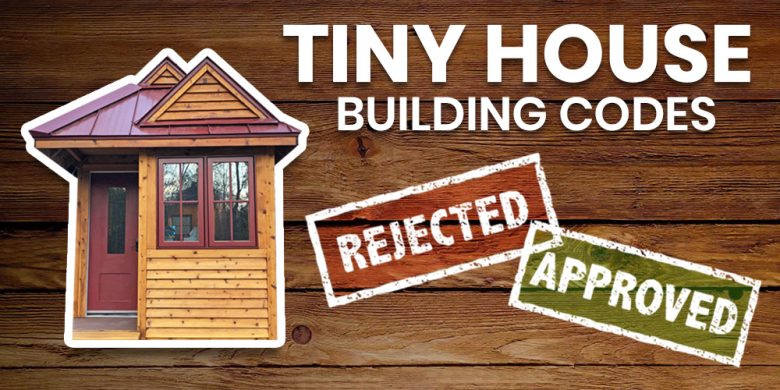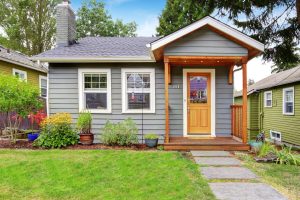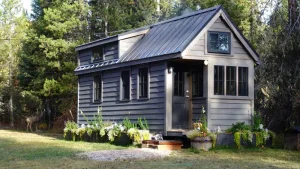In recent years, the tiny house trend has become a popular alternative lifestyle. Many people consider building their own tiny house because they want to simplify their lives and reduce their impact on the world. But figuring out complex building rules can be difficult, and those who want to build tiny homes often face a daunting challenge. In this detailed guide, we’ll cover the most important things you need to know about tiny house building rules and how to follow them. This will help you make your little dream house come true.
What’s so Hard about Tiny House Code?
Despite their small size, tiny houses must follow a complex set of building codes and rules that vary from place to place. These rules cover everything from the minimum size of a room to safety standards for water, electricity, and other systems. Since each region has its own rules, you’ll want to do a lot of research before moving into a tiny house.
Know the Local Rules:
Before you pick up the hammer, you need to know the building codes and zoning rules for where you want to build. Some places have followed the tiny house trend and created rules for building them. Some places may be less friendly and you may have to carefully alter standard building codes to accommodate your tiny home.
Change the Look of Your Design:
Knowing your local building codes will allow you to change the floor plan of your tiny house without breaking the rules. From the height of the attic to the size of the stairs, every part of the tiny house must follow the rules. But that doesn’t mean you have to give up innovation. With the right approach, you create a unique place and show who you are while complying with the law.
How to Deal with Security Standards:
Security should be a top priority for every home, even small ones. Building codes often address issues such as fire safety, structural strength, and ventilation. Know these standards to make sure your tiny home is a safe place to live.
Factors of Longevity:
Tiny houses are often praised for their environmental benefits. Many building codes now include green building rules so you can plan your tiny home to use eco-friendly materials and systems that use less energy.
Seek Professional Help:
Since the building rules are very complex, it is best to seek professional help. Architects, builders and lawyers with experience building tiny homes can provide helpful advice and help you navigate the complex web of rules with confidence.
How to Pay for Your Tiny Home Project:
Before you start building a tiny house, it’s important to think about the cost. Building a tiny house may be cheaper than building a regular home, but you still need to budget and research your financing options.
Budget: Find out how much you can spend on a tiny home project. Consider the price of buying things like land, materials, permits, and labor. Having a detailed budget can help you stay on track and avoid serious financial blows.
Do-It-Yourself vs. Professional Help: Choose whether to build the tiny house yourself or hire someone else to do it. DIY saves money, but it also takes a lot of time and knowledge of how things fit together. Hiring a specialist can ensure that the work is carried out smoothly and within building code compliance.
Means of Payment: While a traditional mortgage may not work for a tiny house, there are other ways to finance it. You can get the money you need to build a tiny house through personal loans, RV loans, or even crowdsourcing. Research each option carefully to find the one that works best for you.
Conclusion:
It takes more than a hammer and nails to build a tiny house. It is a journey of self-discovery, creation and perseverance. To ensure that the building process runs smoothly and the property is safe and legal, it is important to understand how building regulations work. If you have a passion for living efficiently and know a lot about rules, planning and community involvement, you can live out your tiny house dreams while inspiring others.
Remember that getting where you want to go is just as important as getting there. Take on every challenge, enjoy every victory and tell your story to the world. Your adventure of building a tiny house is not just a construction job; it’s also a job. It demonstrates the power of creativity, sustainability and the desire to live life on your own terms.
FAQs:
1. What are building codes and why are they important for small homes?
A building code is a set of regulations and standards that define how buildings should be constructed to ensure safety, accessibility and functionality. For tiny houses, building code compliance is critical to ensuring the structural integrity and safety of the home, as well as complying with legal requirements for occupancy.
2. Are there specific building codes for tiny houses?
Depending on where you are, building codes for tiny homes can vary widely. Some jurisdictions have specific codes for small homes, while others may require you to modify existing codes to fit your design. Researching and understanding local regulations is critical to ensuring compliance.
3. Can I build a tiny house in any country?
The land on which you can build a tiny house depends on the zoning plan. Zoning laws dictate how land is used, and some areas may have restrictions on placing a tiny house. It is important to research zoning and find suitable land for a tiny house.
4. Do tiny houses have to meet safety standards?
Yes, tiny houses must meet safety standards just like traditional homes. These standards cover areas such as fire safety, electrical systems, plumbing and overall structural stability. Adhering to safety standards ensures that your tiny home is a safe and livable home.
5. Can I build my tiny house myself or do I have to hire a professional?
Whether you choose to build a tiny house yourself or hire a professional depends on your building skills and comfort level. While some have successfully built their own tiny houses, others prefer to hire experts to ensure code compliance and a higher level of craftsmanship.



